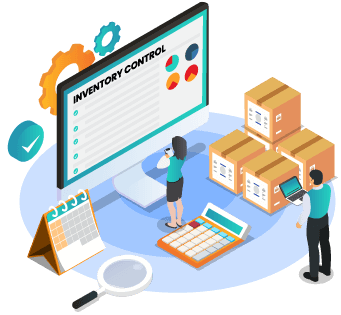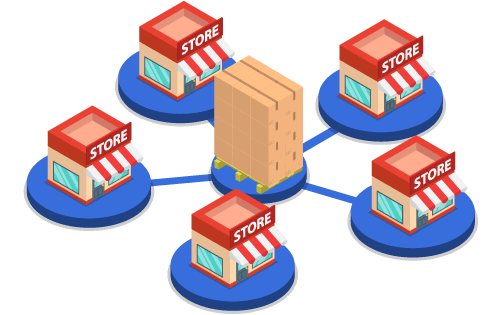Dealing with Obsolete Stock
Built For


Dealing with Obsolete Stock
One of the persistent challenges businesses face is dealing with obsolete stock—items that no longer have market demand and sit idle in warehouses, tying up capital and space. This type of stock can erode profits, inflate carrying costs, and clutter valuable storage areas, hindering operational efficiency.
Effectively managing obsolete or slow-moving stock is not just about clearing out old inventory; it’s about implementing strategies to prevent stock from becoming obsolete in the first place. By understanding the causes and impacts of stock obsolescence, businesses can adopt proactive measures to avoid it. Furthermore, promptly identifying and eliminating usless inventory can help maintain a lean and efficient inventory, ensuring resources are allocated where they are most needed.
In this article, we explore obsolete stock, explore strategies to avoid it and provide practical tips for identifying and eliminating obsolete inventory. By the end, you’ll understand how to tackle this issue and enhance your inventory management practices for better business outcomes.
Understanding Obsolete Stock
Obsolete stock is inventory that has lost its value because there is no longer any demand for it. Changes in market trends, technological advancements, or shifts in consumer preferences may be the culprit for the shift in desirability. Think of it like those dusty VHS tapes or last season’s fashion items no one wants anymore.
Definition of Obsolete Stock
Obsolete stock refers to products that have reached the end of their lifecycle and are no longer sellable at their intended price. These items often take up space in your warehouse and cost you money instead of generating revenue.
Examples of Obsolete Products
- Technology Products: Gadgets and electronics quickly become outdated as newer models hit the market. For instance, last year’s smartphone could soon become obsolete when a new version is released.
- Fashion Items: Fashion trends can change rapidly, leaving behind clothing and accessories that are no longer in style.
- Seasonal Goods: Items tied to specific seasons or holidays, like Christmas decorations or summer gear, can become obsolete once the season passes.
Impact of Obsolete Stock on a Business
Having stale inventory can significantly affect your business in several ways:
- Financial Drain: Idle inventory ties up capital that could be better used elsewhere. It also incurs carrying costs such as storage, insurance, and taxes.
- Storage Space: Obsolete inventory takes up valuable warehouse space that could be used for faster-moving items.
- Operational Inefficiency: Managing stock obsolescence can be a distraction, taking time and resources away from more profitable activities.
- Decreased Profits: Selling stale inventory often requires deep discounts, which can erode profit margins.
Understanding what obsolete stock is and how it impacts your business is the first step toward managing it effectively. In the following sections, we’ll explore strategies to avoid accumulating old inventory and practical tips for identifying and eliminating it if it does occur.
Avoiding Obsolete Stock

Preventing obsolete stock is all about being proactive and implementing smart inventory management practices. Here are some effective strategies to help you avoid ending up with stock that nobody wants.
Accurate Demand Forecasting
One of the best ways to avoid stock obsolescence is to predict demand accurately. Here’s how you can do it:
- Use Historical Sales Data: Look at past sales trends to forecast future demand. This helps you understand which products are popular and which aren’t.
- Implement Inventory Management Software: Inventory software can analyze trends and provide more accurate demand forecasts, helping with informed decisions about purchasing and stocking.
- Regularly Update Forecasts: Market trends can change quickly, so it’s essential to review and update your forecasts frequently based on the latest data.
Efficient Inventory Turnover
Keeping your inventory moving is crucial for avoiding obsolescence:
- Strategies for Faster Inventory Turns: Implement techniques such as First-In-First-Out (FIFO) to ensure older stock is sold first. Running promotions and discounts on slower-moving items can also help.
- Just-In-Time (JIT) Inventory Systems: JIT systems minimize the amount of inventory you hold at any given time, reducing the risk of stock becoming obsolete.
Product Lifecycle Management
Monitoring and managing the lifecycle of your products can help you avoid overstocking items that are nearing the end of their demand cycle:
- Monitor Product Life Cycles: Keep track of where each product is in its lifecycle. This helps you anticipate when a product might become obsolete.
- Plan for Product Phase-Outs: When a product is approaching the end of its lifecycle, plan to phase it out gradually rather than suddenly, reducing the risk of unsellable inventory.
Regular Inventory Audits
Frequent checks can help you identify potential stale inventory before it becomes a problem:
- Conduct Cycle Counts: Regular cycle counts help you stay on top of your inventory and spot slow-moving items early.
- Regular Audits: Perform comprehensive audits periodically to ensure your inventory records are accurate and up-to-date.
These strategies can minimize the risk of ending up with obsolete stock. However, if you do find yourself with unsellable inventory, the next step is to identify it quickly and take action to eliminate it. We’ll cover these steps in the following sections.
Identifying Obsolete Stock
Once you’ve implemented strategies to avoid obsolete stock, the next step is identifying any stock that might still become obsolete. Early identification can help you take swift action to minimize losses.
Inventory Analysis
Conducting regular inventory analysis is vital for spotting items that may become obsolete:
- ABC Analysis: Categorize your inventory into three categories: A (high-value, low-quantity), B (moderate-value, moderate-quantity), and C (low-value, high-quantity). This helps prioritize which items to monitor closely.
- Identify Slow-Moving Items: Use sales data to identify products not selling as quickly as expected. Slow-moving items are potential candidates for obsolescence.
Aging Reports
Aging reports are a valuable tool in identifying stale products:
- Generate Aging Reports: Create reports that show how long each item has been in your inventory. Items in stock for a long time without movement are likely candidates for obsolescence.
- Review Regularly: Review these reports regularly to monitor your inventory’s age. This helps you take action before items become completely unsellable.
Simplify the Process with Inventory Software
Leveraging technology can make the process of identifying obsolete stock much more efficient. You can identify and deal with stock obsolescence early by systematically analyzing your inventory, generating and reviewing aging reports, and utilizing inventory software alerts.
A proactive approach allows you to take timely actions to manage and minimize the impact of obsolete inventory. In the next section, we’ll discuss how to effectively eliminate obsolete stock once it has been identified.
Eliminating Obsolete Stock
Once you’ve identified obsolete stock, the next step is to eliminate it efficiently. Here are several strategies to help you clear out unsellable inventory and make room for new, more profitable products.

Discount Sales and Promotions
One of the quickest ways to move old inventory is by offering it at a discount:
- Run Clearance Sales: Organize sales events specifically to clear out old inventory. Promote these sales through various channels to attract customers looking for bargains.
- Offer Discounts: Provide significant discounts on slow-moving items. This not only helps clear out inventory but also attracts price-sensitive customers.
Create Bundles
Pair obsolete items with best-sellers to create attractive bundles. For example, if a particular accessory is obsolete, bundle it with a popular main product.
Returns to Suppliers
In some cases, you may be able to return stagnant stock to your suppliers:
- Negotiate Returns: Contact your suppliers to see if they accept returns of unsold items. Some suppliers may offer buy-back agreements or credits for future purchases.
- Supplier Agreements: When establishing supplier relationships, negotiate terms allowing unsold or obsolete inventory to be returned. This can provide a safety net for managing excess stock.
Donations and Recycling
If selling obsolete stock isn’t feasible, consider alternative methods like donations or recycling:
- Donate to Charities: Donate unsellable items to local charities or non-profit organizations. This helps clear your inventory, provides a positive community impact, and has potential tax benefits.
- Recycle or Repurpose: Look for ways to recycle or repurpose materials from obsolete products. This can be an eco-friendly option that also frees up storage space.
Best Practices for Future Prevention
Learning from past experiences that resulted in obsolete or slow-moving inventory can help you avoid future obsolescence:
- Continuous Improvement: Review your inventory management practices regularly and improve based on your learning. This includes updating demand forecasts and adjusting reorder levels.
- Implement Technology: Invest in inventory management solutions that offer real-time data and analytics to streamline operations.
- Employee Training: Ensure your staff is thoroughly trained in inventory management best practices. Encourage them to be proactive in identifying and managing obsolete stock.
By using these strategies to eliminate obsolete stock, inventory can be optimized, carrying costs reduced, and overall business efficiency improved.
Call us at 817-870-1311




